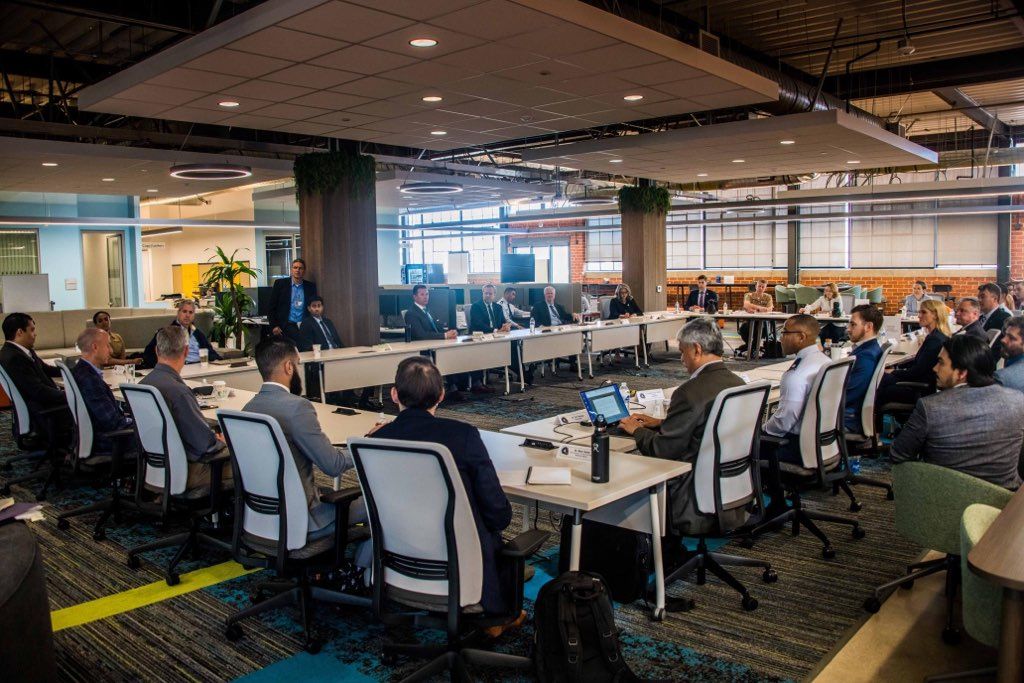Hicks said DoD still has a long way to go in making its procurement process more suitable for the commercial industry
WASHINGTON – During a visit to Los Angeles last week, Deputy Defense Secretary Kathleen Hicks stopped by SpaceWERX, a new organization created to match technologies developed by commercial space businesses with Space Force buyers.
“They hosted a roundtable with industry while I was there. It was an impressive set of exchanges,” Hicks told reporters April 12 at a breakfast meeting in Washington.
Hicks said she liked what she heard about SpaceWERX and what it has done so far to attract startups. But she cautioned that DoD still has a long way to go in making its procurement process more suitable for the fast-moving commercial industry.
At SpaceWERX Hicks met with approximately 15 space businesses and startups to hear about their experiences working with DoD. A frequently heard complaint from these businesses is that “we need to bridge the infamous valley of death,” Hicks said. The valley of death is a term used to describe the transition of technologies from research projects and prototypes to procurement programs with long-term funding.
There is a lot of early-stage innovation but there is no process in place to identify where those innovations might fit in the larger defense programs, Hicks said. She spoke about the “handoffs” that have to take place in programs from the science and technology phase to applied research, development, prototyping, testing and ultimately production.
“We could not have a more complicated system,” she said.
Hicks last year created an “innovation steering group” precisely to look at this problem. The group is led by Heidi Shyu, undersecretary of defense for research and engineering.
One of the initiatives planned by the steering group is to fund experiments that would allow broader participation by small businesses and startups. This is important for DoD so it can create more competition in the defense industrial base that for decades has been shrinking as a result of mergers and acquisitions.
Hicks said at SpaceWERX she got a glimpse of the emerging partnership between commercial space and the Space Force. “But SpaceWERX is one of the individual pieces of the innovation ecosystem in DoD,” he said. “They have a slice of that in which I think they are being extremely effective. The challenge for me at the enterprise level is to be able to see that system all the way across and understand where the challenges are so we can build some capacity.”
“That’ll be my focus in the coming months,” said Hicks. She directed the innovation steering group to develop a “map of the ecosystem so we can understand who the innovation units are and what they are doing.”
From the industry perspective, there are still a lot of barriers, said Hicks. “SpaceWERX is helping to lower barriers, I have no concerns about them . But across the system, I have concerns about the pain points to help folks get through the system.”
SpaceWERX and its parent organization AFWERX created multiple paths for companies to compete for Small Business Innovation Research (SBIR) contracts. In the first phase, companies can win $50,000 for studies. Companies can then apply for Phase 2 and Phase 3 contracts to further develop technologies and deliver actual products. Those follow-on contracts can be worth up to $3 million. A more recent initiative called Strategic Financing, or STRATFI, provides funding of up to $15 million for companies that have hot products of significant interest to the military. Many companies that embark on the SBIR journey don’t go far and perish in the valley of death because they have no path to the market.
